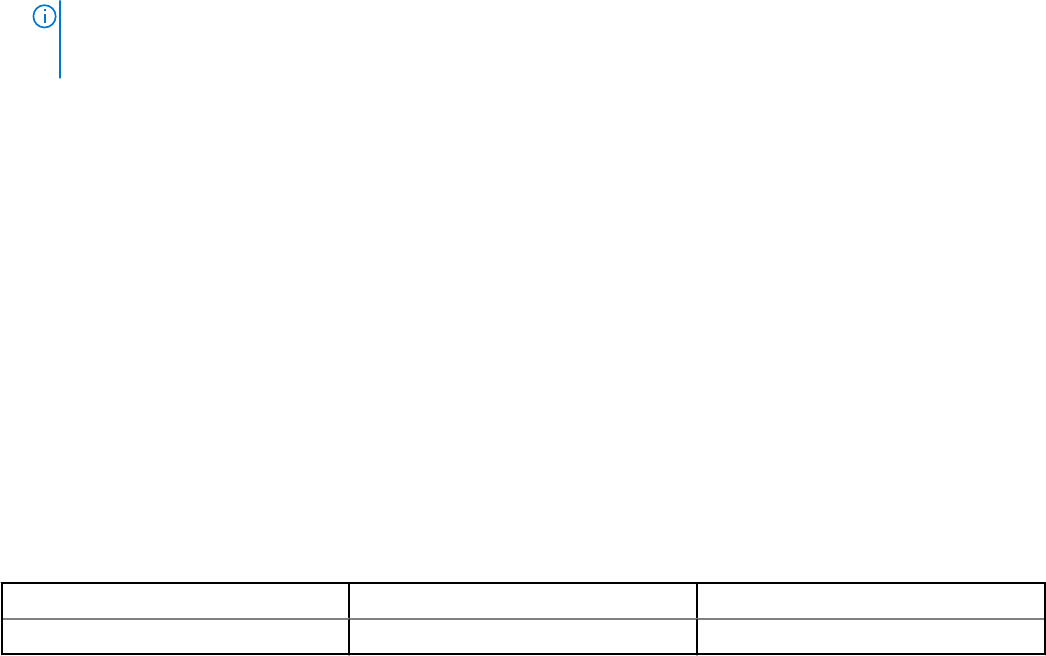Users Guide
Table Of Contents
- Dell EMC OpenManage Integration Version 2.1 with Microsoft Windows Admin Center User’s Guide
- Contents
- Overview of OpenManage Integration with Microsoft Windows Admin Center
- Getting started with OpenManage Integration with Microsoft Windows Admin Center
- Ports required by Dell EMC OpenManage Integration with Microsoft Windows Admin Center
- Manage Dell EMC PowerEdge Servers
- Manage Failover clusters, Azure Stack HCI, and Windows Server HCI clusters
- View iDRAC details of the PowerEdge servers and nodes of HCI and Failover clusters
- Update PowerEdge servers and nodes of Windows Server HCI, Azure Stack HCI, and Failover clusters using OpenManage Integration extension
- Integrated deploy and update of Azure Stack HCI clusters
- Full Stack Cluster-Aware Updating for Azure Stack HCI clusters using OpenManage Integration snap-in
- Manage CPU cores in clusters or individual nodes
- Add nodes to existing clusters
- Troubleshooting and Frequently asked questions
- Identifying the generation of your Dell EMC PowerEdge server
- Contacting Dell EMC
- Glossary
- Appendix

For example, if one node has Qlogic network adapter and other nodes have Mellanox network adapter, then this
configuration is not supported. In this case, at least one common RDMA network adapter(Qlogic or Mellanox) should be
present in all nodes.
Disks
● It is recommended that all nodes should contain compatible disks as mentioned in the AS HCI support matrix. Using nodes
with incompatible disks results in a warning.
● It is recommended that all nodes should contain up to two media types. Supported media type combinations are as follows:
○ Persistent Memory and NVMe
○ Persistent Memory and SSD
○ NVMe and SSD
○ NVMe and HDD
○ SSD and HDD
○ ALL NVMe
○ ALL SSD
Using combination of three media types such as NVMe, SSD and HDD results in HCI configuration profile failure.
● It is recommended that all nodes should have minimum number of drives required per media type.
For example, if a node has only 1 media type of SSD, then at least 4 capacity drives of SSD are required. If a node has 2
media types such as SSD and HDD, then 2 SSD drives for cache and 4 HDD drives for capacity are required.
Using media types with different drives results in a warning.
● All nodes must have the same drive types. For example, if one node has SATA drives they should all have SATA drives. Using
combination of SATA and SAS drives in a cluster results in HCI configuration failure.
● It is recommended that all drives of each media type such as SSD, NVMe, and HDD across all cluster nodes have the same
bus protocol such as SAS, SATA, or PCIe.
For example, if one node has SSD and HDD drives with SAS bus protocol, other nodes should also have SSD and HDD drives
with SAS bus protocol. Using drives of different bus protocols results in a warning.
NOTE:
It is recommended that drives across selected nodes have the same bus protocol to achieve symmetrical
configuration. For example, nodes with drives such as SSD and HDD with SATA and SAS bus protocols respectively are
not a supported configuration.
● It is recommended that all nodes should have drives of equal size and count per media type.
For example, If one node has 4 SSD drives of 2 TB size, other nodes should also have 4 SSD drives of 2 TB size. Using nodes
with different count and capacity results in a warning.
● It is recommended for each node having drives of SSD or NVMe media type to have the same endurance.
For example, If one node has 4 Mixed Use SSD drive type, other nodes should also have 4 Mixed Use SSD drive type.
Using nodes with drives of different endurance such as Read intensive, Mixed Use, and Write Intensive results in a warning.
● If persistent memory is present on at least one node, all the remaining nodes selected for the cluster should also contain the
same number and capacity of persistent memory modules. Using nodes with different persistent memory modules results in a
warning.
● The total raw capacity of the cache drives should not be less than 5% of the raw capacity of the capacity drives.
Example configurations
Here are some supported and unsupported configurations:
Not supported: different models between nodes
The first two nodes use AX-640 model but the third node uses AX-740xd.
Node 1
Node 2 Node 3
AX-640 AX-640 AX-740xd
This is not supported. All nodes should have the same model node.
Supported: no more than two media types
Integrated deploy and update of Azure Stack HCI clusters
31










